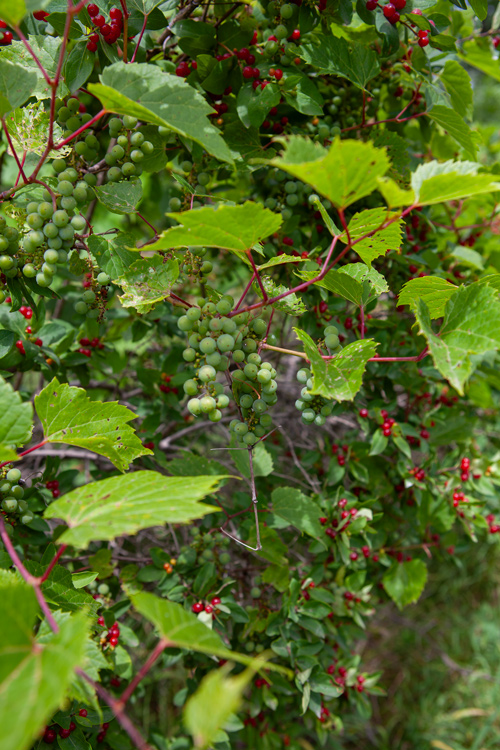Below the Heart River, ND Despite windy conditions, the expedition makes forty miles. As they pass abandoned village sites, Chief Sheheke (Big White) tells Clark of his people’s history. Near the Heart River, he tells the Mandan creation story.
Riverbank Grape
Knife River mouth, 28 July 2013. © by Kristopher K. Townsend. Permission to use granted under the Creative Commons Attribution-Share Alike 4.0 International license.
An Indian Legend[1]Originally aired weekdays by Yellowstone Public Radio during the Bicentennial observance of 2003-2006. Narrated by Hal Hansen. Scripts by Whit Hansen and Ed Jacobson. Produced by Leni Holliman. © … Continue reading
A Windy Day
we proceeded on, to a point on the N E. Side opposit the remains of an old Mandan village a little below the enterance of Chiss-che-tor [Heart] River and the place we Encamped as we assended this river 20th of October 1804 haveing come 40 miles to day. after landing which was a little before night the hunters run out into the bottom and Killed four deer. The winds blew hard from the S. E. all day which retarded our progress very much
—William Clark
Mandan Creation Story
he [Sheheke] told me his nation first Came out of the ground where they had a great village. a grape vine grew down through the Earth to their village and they Saw light . . . . and deturmined to go up and live upon the earth, and great numbers climbed the vine and got upon earth men womin and children.
—William Clark
Paunch and Crow Separation
he [Sheheke] Said that the Menitarras [Hidatsas] Came out of the water to the East and Came to this Country and built a village near the mandans from whome they got Corn beens &c. they were very noumerous and resided in one village a little above this place on the opposit Side. they quarreled about a buffalow, and two bands left the village and went into the plains, (those two bands are now known bye the title Pounch, and Crow Indians.
—William Clark
Sioux and Smallpox Troubles
the Sieoux [Sioux] and Small pox killed the greater part of them and made them So weak that all that were left only made two Small villages when Collected, which were built near the old Ricaras [Arikaras] village above. their troubles with the Scioux & Pawnees or Ricaras Compelled them to move and build a village where they now live.
—William Clark
Weather Diary
State of the weather at Sun rise State of wind at Sunrise State of the weather at 4 P. M. Wind at 4 P. M. State of river cloudy after rain S E fair S. E fall 1 ½ in. rained moderately last night in forpart of the night.
—William Clark[2]To assist the reader of this web page, the date column is omitted, some abbreviations have been spelled out, and the three river columns have been merged.
Notes
| ↑1 | Originally aired weekdays by Yellowstone Public Radio during the Bicentennial observance of 2003-2006. Narrated by Hal Hansen. Scripts by Whit Hansen and Ed Jacobson. Produced by Leni Holliman. © 2003 by Yellowstone Public Radio. |
|---|---|
| ↑2 | To assist the reader of this web page, the date column is omitted, some abbreviations have been spelled out, and the three river columns have been merged. |

